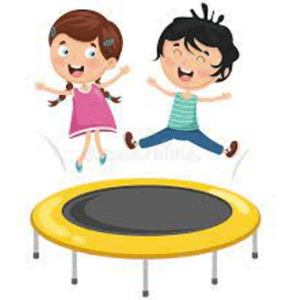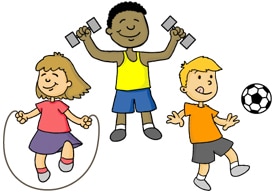Exercise in Individuals with Autism is a great thing. It’s commonly known that exercise is good for you. Exercise is not only performed to lose weight but also improve mental health and mood, reduce risk of heart diseases, manage sugar and insulin levels, improve sleep, strengthen bones and muscles, and can maintain good thinking, learning, and judgement skills.
How Much Exercise in Individuals with Autism is good?
The recommended time for exercise is 30-60 minutes a day of moderate physical activity. However, studies show that an active lifestyle of engaging in light to moderate activity daily or 3-5 hours weekly was also very beneficial.
Why does it affect individuals with Autism?
Individuals with Autism that struggle with motor skills, communication, and social skills can lead a sedentary lifestyle due to the inability to play with others or the gross motor movements needed to play a physical game. High rates of stereotypical and repetitive behaviors can impede their ability to participate in a physical activity. This can eventually lead to obesity, chronic disease, or challenges with their mental health.
What can you do?
It is suggested to encourage similar sensory seeking stimulation during exercise or teaching the movements of exercise through ABA intervention by teaching them to imitate or copy the movements, verbal, visual, or hands-on cues.
Encourage your child to jump on the trampoline, dance, bear crawl, run in place or outside, bounce on an exercise ball, yoga, exergaming (electronic games that involve physical activity), catch or throw a ball etc.
Remember, you are your child’s role model! So, show them that physical activity is fun and enjoyable by modeling it to them. Encourage and motivate them to participate with you. If needed, create a visual schedule of when they will exercise in the day and make it a daily routine.
Benefits of exercise
- Children’s strength and motor skills will improve
- Improved balance, coordination, visual-motor control
- Improved social interaction
Keep In Mind
Before starting, consult with a doctor, start slow with a low intensity, and ensure your child is hydrated.
You can always start small by adding exercise in your daily routine. A few ideas: walk your dog or to school or dance along with or follow fitness or dance videos online.

If you have questions please contact us at info@abantx.com or Get Started.
You can also follow us on ![]()
References
Huang, J., Du., C., Liu, J., and Tan, G. “Meta-Analysis on Intervention Effects of Physical Activities on Children and Adolescents with Autism.” International Journal of Environmental Research and Public Health, 17 (6), March 2020, doi: 10.3390/ijerph17061950
Warburton, D. E. R., Nicol, C. W., and Bredin, S. S. D. “Health benefits of physical activity: the evidence.” Canadian Medical Association Journal, 174 (6), March 2006, doi: 10.1503/cmaj.051351
Healy, S. “Autism and exercise: Special Benefits.” Autism Speaks. https://www.autismspeaks.org/expert-opinion/autism-exercise-benefits (accessed March 16, 2022)

